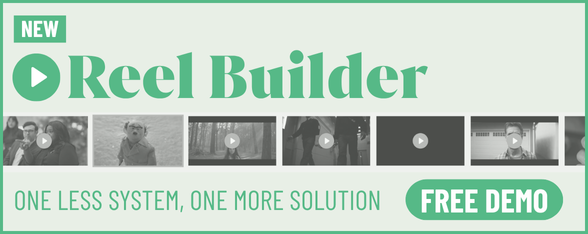
It’s Not Human Versus Machine: Guy Soulsby on the Changing Attitudes Towards AI

Guy Soulsby is creative director at Imagine This’ AI studio, Made by Humans; home to the world’s best AI artists. Originally a working-class lad from the north of England, Guy Soulsby began his visual journey with a solitary Sony PD150 camera at his local college – a coveted relic of cinematic potential that he put to good use.
After college, Guy navigated various tedious occupations, all in pursuit of the financial means to fund his creative ambitions. Championing his showreel, he secured a foothold in the industry, and London became his new home.
Fast forward 20 years, and armed with unwavering determination, Guy has directed an eclectic mix of work that showcases his expertise in marrying compelling performances with complex visual effects and artificial intelligence.
LBB> What’s the most impactful way that AI is helping you in your current role?
Guy> Creative creation has been transformed for me by AI. I’m now able to instantly manifest whatever idea comes to mind – whether that’s images, videos, or entire worlds.
AI helps bring concepts to life with remarkable speed and precision. I can set a visual tone, build immersive environments, and craft compelling characters that capture my vision.
AI isn’t just about faster output; it’s about breaking through creative barriers. Tools like Midjourney, for example, democratise high-quality visual generation for just $8 a month – less than a flat white in Soho. Okay, the costs do add up, but the low entry point unlocks huge creative potential for exploration.
It’s allowed me to respond to briefs faster, generate tailored visuals, and communicate ideas more effectively to clients and agencies. AI is an enabler, cutting through traditional limits of time and resources, and access, and empowering me to push my creative output every day.
LBB> We hear a lot about AI driving efficiencies and saving time. But are there any ways that you see the technology making qualitative improvements to your work, too?
Guy> Absolutely, the speed of AI is undeniable – ideas form in my mind and come to life almost instantly with the right prompts and an understanding of different platforms. But it’s not just about speed; my knowledge of film language, visual storytelling, and cinematic sensibility brings a qualitative edge.
Now, I can create visuals and videos that don’t just convey a concept, but truly reflect my vision, style, and ambitions for a project. This clarity enables agencies, clients, and brands to not only grasp my thinking but also experience the tone, style, and energy I’m aiming to achieve.
It bridges the gap between idea and execution, bringing a new level of depth and refinement to my work.
LBB> What are the biggest challenges in collaborating with AI as a creative professional, and how have you overcome them?
Guy> One of the biggest challenges in collaborating with AI as a creative professional is managing iterations. If you have a solid grasp of the platforms, parameters, prompt structures, and model training, you can get a long way, depending on what you are creating.
Regular things are easy, but once you step into unusual ideas and creative ambitions, it can require many iterations. The final push – the polish – requires compositing, upscaling, cleanup, refinement, grading, and more.
Having the understanding and ability to complete these final pieces of the puzzle in different software is essential for achieving a high-end result.
Another challenge is acceptance. Agencies and clients are often excited but also anxious. A lot of time goes into educating them on the process, workflows, and new ways of working with AI. It’s rewarding, though, because it not only builds trust but also elevates the conversation around what AI can enable creatively.
Then there’s the pace of change. It’s almost amusing: you’ll be deep into creating something, and the next day, a new tool drops, and you think, ‘Damn, this would have been perfect last week!’ Keeping up is a challenge, but it pushes me to continually learn, adapt, and improve.
Ultimately, working with AI is a balance – harnessing its speed and power while navigating the learning curve, managing expectations, and ensuring the final output aligns with the creative vision.
LBB> How do you balance the use of AI with your own creative instincts and intuition?
Guy> AI is an extension of my creative instincts and intuition. Without my ideas and vision, it’s just a tool generating ‘stuff.’ My taste, aesthetic, and years in the industry shape the output, giving it purpose and resonance.
AI amplifies creativity, but my instincts guide the process – steering prompts, refining results, deciding what works.
It’s not human versus machine; it’s me using AI as a brush, with my creative sensibility as a director.
LBB> And how do you ensure that the work produced with AI maintains a sense of authenticity or human touch?
Guy> Authenticity and human touch come from understanding prompt structure, film language, and infusing prompts with human sensibilities and creative ambition.
AI is advancing rapidly, with platforms offering texture, light, and detail that feel more ‘authentic’ – even allowing users to train personal profiles that align with their taste and aesthetic.
But it’s still the human input – the idea, the refinement – that makes the work feel real.
LBB> Do you think there are any misconceptions or misunderstandings in the way we currently talk about AI in the industry?
Guy> Absolutely. One of the biggest misconceptions is the idea that you can just type a prompt and – voila – you’ve instantly created something amazing with AI. That’s often followed by the familiar complaint: 'I just got a load of rubbish.' The truth is, AI requires time, learning, and a deep understanding of the platforms, prompt structures, and capabilities.
Like any creative tool, the quality depends on the skill and insight of the user. It’s not magic – it’s craft.
LBB> What ethical considerations come to mind when using AI to generate or assist with creative content?
Guy> James Cameron recently said, 'Let’s not judge AI by the input, but by the output,' which is an interesting take. He followed it up with, 'If I copy Star Wars, I’ll get sued' – and he’s absolutely right. As creatives, we’re all influenced by the world around us.
In traditional advertising and creative industries, it’s common to use references, mimic styles, and draw inspiration from iconic figures like Wes Anderson. Yet when it comes to AI, people tend to react with outrage.
One of the big ethical grey areas is the source material AI models are trained on. We often don’t know exactly what content has been scraped or ingested, which raises legitimate concerns about the integrity and ownership of the resulting work.
It’s a challenging issue because, unlike human creativity, which has clearer lines of reference and homage, AI's 'influence' can stem from massive, untraceable datasets.
For me, the line is clear: blatant rip-offs deserve to be called out. But using references and styles as starting points – refining, building, and transforming them into something new – is a valid creative process. AI amplifies creativity, but we need to use it responsibly, respecting originality while pushing boundaries.
LBB> Have you seen attitudes towards AI change in recent times? If so, how?
Guy> Yes. Attitudes towards AI have shifted noticeably in recent times. Those who were once skeptical – even outright opposed – are now beginning to explore its potential, comment on its capabilities, and, slowly but surely, embrace its creative possibilities.
For creatives, generative AI isn’t a replacement; it’s a powerful creative partner. It allows us to conjure ideas into reality with unprecedented speed and scope, bridging the gap between imagination and execution.
I’ve seen directors, once cautious, start to see the tangible value AI brings to the table. It’s a collaboration between human ingenuity and technological capability, and the results are elevating the creative process in exciting new ways.
LBB> Broadly speaking, does the industry’s current conversation around AI leave you feeling generally positive, or generally concerned, about creativity’s future?
Guy> Honestly, it’s a bit of both. The current conversation around AI swings between excitement and fear – sometimes in the same sentence. I feel positive about the creative possibilities AI brings; it’s like having a new toolset that, used well, can elevate ideas and bring visions to life faster and with more precision.
But I’m also aware, as a live-action director for the past 20 years, that it might take over, in some form or another, and there are valid concerns around ethics, and the grey areas of source material.
Overall, I’m optimistic – we are seeing new voices, stories, characters, and wild creations that are different, interesting, and exciting.
In all the noise and chatter we need to keep the conversation open, honest, and focused on using AI as a tool to enhance, not replace, human creativity.
LBB> Do you think AI has the potential to create entirely new forms of art or media that weren’t possible before? If so, how?
Guy> AI as a whole is shifting gears – where it’s headed, who knows? But one thing’s for sure: generative AI is already pushing creative possibilities. I’m not certain it’s creating entirely new forms of art, but it’s undoubtedly unlocking a new kind of imagination, helping people visualise and craft ideas that might have seemed impossible before.
It’s not about AI replacing creativity – it’s about opening up new pathways of expression and possibility, and that’s what makes this so exciting.
LBB> Thinking about your own role/discipline, what kind of impact do you think AI will have in the medium-term future? To what extent will it change the way people in your role work?
Guy> AI is already making waves in how we work. It’s changing the way we think, how we sharpen our writing, and how we elevate engagement – whether through the language in a treatment or the visuals on a page.
But here’s the thing: none of it matters without people.
We’re the ones who have the initial spark – whether it’s a story, a concept, or a visual. Humans are the real activists and instigators. AI isn’t here to replace that spark; it’s here to help us bring those ideas to life faster, sharper, and with more impact.
It’s a powerful tool, but the creativity – the heartbeat – will always come from us.















